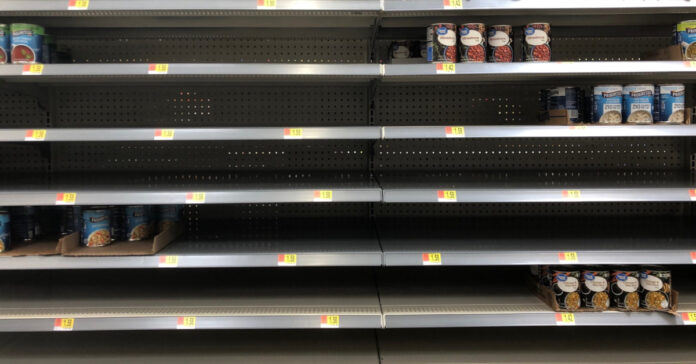
Decades ago, I thought the world would end in nuclear fire. Years ago, I worried about an EMP. More recently, I worried that our collapsing economy, encroaching socialism, and the possibility of Civil War II. I also worry about a war involving the U.S. and China.
Today, I added a fresh worry: that life as we know it may collapse because we run out of stuff.
What kind of stuff? You know, the stuff we eat, the stuff we pump into our cars, the electricity that powers our homes, and the medications that sustain many people. That kind of stuff, followed by everything we buy: appliances, lumber, electronics, cars, drugs, beverages, apparel, toys, etc. This will be driven in part by shortages of raw materials, like steel, aluminum, copper, rare earth minerals, oil, and fertilizer. The shortages will be exacerbated by shortages of truck drivers, port workers, warehouse personnel, and even retailer employees. Trade wars, cold wars, and hot wars could make shortages even worse.
Think about it: In the past year or two, there have been days or weeks in different states when these things were in short supply. That should be a warning sign, a reason to prepare.
As bad as running out of stuff is, the reaction of people when there is no food, medication and other goods are gone will be what causes the societal collapse. People get annoyed when gas prices rise and the cost of food jumps, but when there is not enough to go around, entitled Americans are going to freak out. That will lead to one of two things: a real insurrection when the people who show up at the capital are heavily armed and not interested in selfies, or chaos in the streets as people fight over limited supplies of food and fuel.
Supply Chain Problems Continue
I read today that J.M. Smucker, maker of Milk Bone, Meow Mix, and other pet foods, expects some products to remain in limited supply until early 2023. You want to piss some people off? Make their pets suffer.
But that’s just one example. Container ships are still backed up at ports. Lumber prices are heading up again, in part because of the flooding in Western Canada that wiped our roads and bridges, leaving no way to get lumber from the mills to market. New and used cars remain in short supply, keeping prices high.
So far, the biggest side effect of shortages is rising prices as the markets try to correct for scarcity and as suppliers pass on their higher costs for raw materials and labor. People are unhappy paying more, but they are not yet marching in the streets. When they can’t find or can’t afford basic foodstuffs, that’s going to change. There will not be enough police or National Guardsmen to stop a city full of hungry, pissed off people.
Severe shortages will lead to looting, which will lead to fewer supplies as stores are stripped. This will exacerbate the problem, leading to more violence. Once there are no supplies left in stores, people will attack and steal from homeowners with excess food.
I think we are on the downslope after reaching a point I will call “Peak Supply Chain.” We have weakened the supply chain, and it is so interconnected and interdependent that it may never recover.
Years of Problems
I think we won’t see a recovery and return to the kind of product availability we enjoyed in 2019 until the country completes a transition from manual labor to automation. I’m talking self-guided ships, ports with cranes that can automatically unload ships, self-driving trucks, robots in warehouses, etc. This paradigm shift won’t come easy or quick. That kind of change will either cause great social upheaval.
As preppers, our goal is to survive the collapse of the supply chain, the looting that will occur as supplies dwindle and people grow hungry and angry, and the transition to some new form of society where automation does most of the work and jobs are scarce. There may be wars at home or abroad. There may be martial law. The government might try to confiscate private property, or nationalize companies. We need to make it through all of that, whether it takes two years or two decades.
Move Out of the Cities
Back in late September, I addressed how to shorten your personal supply chain. I recommend you read the article, one of many pointing out that surviving in a city won’t be easy. A key aspect of shortening your supply chain will be to grow and raise as much of your own food as possible.
Once you move somewhere with land, build your infrastructure. Fencing. Outbuildings. Shelter for your animals. Raised beds. Your compost pile. Install a wood stove if your house does not have one. Build your woodpile.
Chances are, society won’t collapse tomorrow, but that doesn’t me we won’t see some more decay in the coming months. As inflation grows, your costs to move and prepare will grow as well. If you are serious enough about prepping to read this article, you should consider moving into an area where you can shorten your supply chain and become more self-sufficient.






